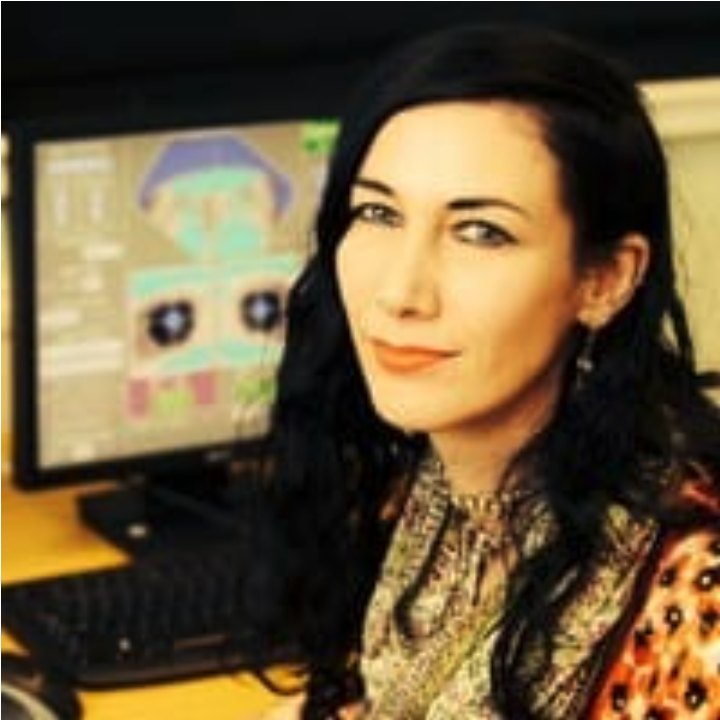Dr Mel McKendrick is a Chartered Psychologist, Assistant Professor in Psychology at Heriot-Watt University and CEO of Optomize Ltd. She has 11 years of experience in eye tracking research and leads the Heriot-Watt Medical Education Lab with the aim of bringing healthcare training problems together with technology solutions. Dr McKendrick is the founder and CEO of Optomize Ltd., which provides eye-tracking and human factors research services, prototype testing and software solutions for medical training. Optomize was awarded a Scottish Enterprise SMART Grant in 2015 match funded by the Gabriel Investment Syndicate and began trading in 2018.
One of my earliest memories as a child was of a television drama featuring a fully holographic television. It captured my imagination and has remained with me for decades. My school was very focussed on learning about science as an academic subject (process), not learning about science just because it’s fascinating (outcome). I avoided STEM subjects in school in favour of arts but never missed an episode of Tomorrow’s World (the long running BBC science and technology programme). Nobody ever asked me if I would be interested in making those holograms a reality. Why not?
I came from a family of boys and nobody considered that I as the only girl might do any form of STEM career, but they were quick to comment on what I wore. I learned that I could gain approval through fashion and embarked on a career as a fashion model. I believe that there are expectations on girls, particularly now with the rise of social media that can shape their view of themselves. When I eventually went to university, I loved the science of Psychology but avoided using experimental technology because I lacked confidence. I had heard a lot of messages by then that people did not associate my image with STEM and I allowed it to shape who I thought I was. There are still practical and cultural barriers that need to be tackled to motivate women in STEM, such as flexibility in working patterns and biased attitudes and these should not be overlooked. Therefore, focus on the systems in terms of opportunity and on personal motivations are equally important. Women need a goal to drive them and the belief that they can succeed if they pursue it.
During my undergraduate degree I set up a mental health charity and this inspired me to apply for an MRes and PhD to investigate social perception and anxiety. I was also interested in social anxiety having been badly affected by it during my modelling career. It was my motivation to investigate something I cared about that made me look for the most effective way to study it. I started programming experiments using eye tracking and realised that I actually loved technology. It was exciting and opened a whole new world of discovery where I could answer all my questions about how people interpret each other. This completely changed how I viewed myself. At career level a lack of exposure to working with technology may be passively discouraging females from pursuing STEM careers. Exposure is key. If the girls won’t come to STEM then bring it to them. Don’t ask them, show them, involve them. Indeed, a recent article published in Computers in Human Behavior (Hosein, 2018) found that female gamers were more likely than other girls of the same age to pursue STEM subjects in school.
Towards the end of my PhD I had enough passion for eye tracking and technology to start my own technology company to develop eye tracking software for medical training. As a female CEO of a tech company and a STEM academic, I have never felt more fulfilled (and I still love fashion). STEM and more traditionally female interests are not mutually exclusive. Females may have different motivations/interests and it is important to understand them. Who do they want to be? How can STEM subjects help them to achieve their goals? This needs to be more personalised and can be introduced at school, university or in the workplace.
I would like Government, schools and universities to introduce through targeted funding calls and public engagement opportunities, modern technologies such as virtual, augmented and mixed realities into the classroom setting for a variety of applications (of interest to students). Let them experience the wonder of a virtual or holographic world, measure some behaviours when they are doing so and then explain to them the teams and processes involved from engineering of a VR application; the physics of holograms; the psychology of measuring behaviour and the statistics in analysing it. Let them design their own applications using gamification. Find out what games, sports and hobbies they are interested in and show them how they can be represented virtually with them playing the roles of STEM researchers and STEM entrepreneurs. The important things is to first establish their interest/vision and then show them a possible future world based around this and their potential role within it.
The difficulty that many technology companies have with breaking into the medical market is that they don’t always ask clinicians what they want before trying to sell them technology. I think that the same may be true of STEM and females. Ask girls what they want (individually) for their future that will reflect their interests and then tell them how STEM can give it to them. I now have the chance to work with holograms in my eye tracking work. How much time would have been saved had someone picked up and acted on my early love of holograms and told me that a career in STEM would perhaps enable me to be one of the people who could bring them to the world?
